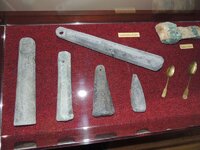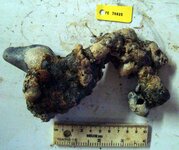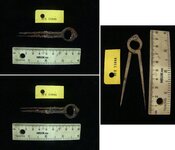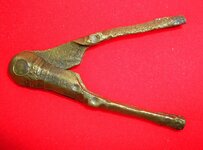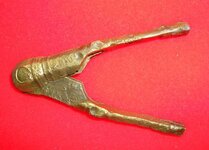PhipsFolly
Hero Member
- Sep 30, 2005
- 637
- 608
- Detector(s) used
- Minelab Sovereign Elite & Sovereign XS, Minelab Equinox 800 and Aquapulse AQ1B
- Primary Interest:
- All Treasure Hunting
I was just curious as to how many and what types of navigational instruments (dividers, sounding weights, and ?) have been recovered from the 1715 Fleet wrecksites.
I personally have recovered a pair of Dutch dividers and a pair of Spanish dividers and two different size lead sounding weights... One small sounding weight (havent checked the actual weight yet) and one very large 24 Pounder! Both the same shape and design with the divot in the bottom to check the bottom composition.
I have seen some odd shaped sounding weights from other wrecks and always wondered whether there was a particular reason for the varying shapes and sizes or whether it was simply the makers personal choice... Any thoughts?
I personally have recovered a pair of Dutch dividers and a pair of Spanish dividers and two different size lead sounding weights... One small sounding weight (havent checked the actual weight yet) and one very large 24 Pounder! Both the same shape and design with the divot in the bottom to check the bottom composition.
I have seen some odd shaped sounding weights from other wrecks and always wondered whether there was a particular reason for the varying shapes and sizes or whether it was simply the makers personal choice... Any thoughts?







